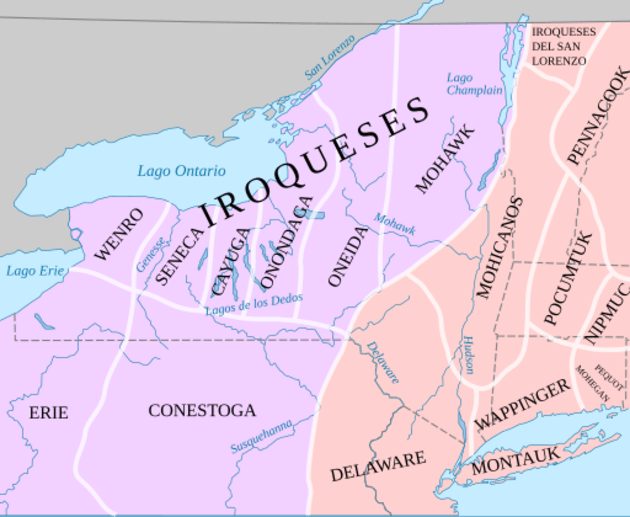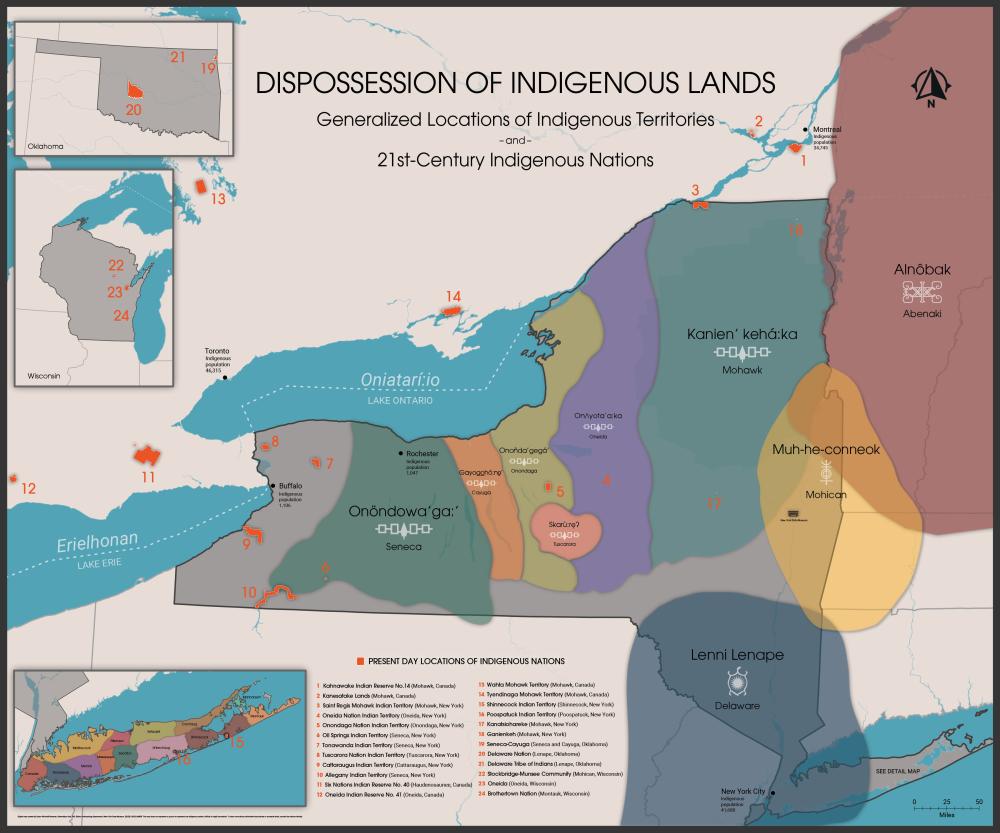
Echoes and Enduring Voices: The Native American Tribes of New York
Beyond the towering skyscrapers of Manhattan and the verdant vineyards of the Finger Lakes, New York State holds a deep, complex, and often overlooked history: that of its indigenous peoples. Far from being a relic of the past, Native American tribes in New York are vibrant, sovereign nations, deeply rooted in their ancestral lands, yet constantly adapting to the challenges and opportunities of the 21st century. Their story is one of profound cultural richness, devastating loss, remarkable resilience, and an ongoing fight for self-determination and recognition.
The Ancient Roots: Haudenosaunee and Algonquian Peoples

Long before the arrival of European explorers, the lands that would become New York were home to a diverse tapestry of indigenous cultures. The dominant linguistic and cultural groups were the Iroquoian-speaking peoples to the north and west, and the Algonquian-speaking peoples predominantly in the east and along the coast.
The most prominent of these were the Haudenosaunee, often referred to by the French term "Iroquois." This powerful confederacy, whose name translates to "People of the Longhouse," originally comprised five nations: the Mohawk, Oneida, Onondaga, Cayuga, and Seneca. They later welcomed the Tuscarora, who migrated from North Carolina in the early 18th century, becoming the Six Nations.
- Interesting Fact: The Haudenosaunee Confederacy is one of the oldest participatory democracies in the world, predating the United States Constitution by centuries. Its Great Law of Peace (Kaianere’kó:wa) established a complex system of checks and balances, collective decision-making, and individual rights, profoundly influencing early American thinkers like Benjamin Franklin. The symbol of the Confederacy is the White Pine, under which the Peacemaker buried the weapons of war.
Their traditional territory stretched across much of upstate New York, from the Hudson River to the Great Lakes. The Haudenosaunee lived in well-organized villages, practiced advanced agriculture (the "Three Sisters" – corn, beans, and squash), and maintained sophisticated political and social structures.
To the east, particularly along the Hudson River Valley, Long Island, and parts of the Lower Hudson region, lived various Algonquian-speaking groups. These included the Lenape (often referred to as Delaware), Mahican, and numerous smaller bands like the Shinnecock, Montaukett, and Unkechaug on Long Island. While generally less unified than the Haudenosaunee, they were skilled hunters, fishers, and gatherers, adapting to the coastal and riverine environments. Their economies were often based on trade, including the production of wampum – sacred shell beads used for currency, ceremonial purposes, and recording treaties.
The Storm of Contact and Colonial Conflicts

The arrival of Europeans in the early 17th century irrevocably altered the landscape and lives of New York’s indigenous peoples. Dutch traders established a presence in Fort Orange (Albany) and New Amsterdam (New York City), eager to exploit the lucrative fur trade. The Haudenosaunee, strategically positioned between French and British colonial powers, became key players in the unfolding imperial rivalries. They skillfully navigated these alliances, playing one power against another to maintain their own influence and protect their lands, often engaging in the devastating "Beaver Wars" to control hunting grounds and trade routes.
The American Revolution proved to be a cataclysmic event for the Haudenosaunee. The Confederacy, which had maintained a complex neutrality for decades, was torn apart by divided loyalties. The Mohawk, Seneca, Cayuga, and Onondaga largely sided with the British, while the Oneida and Tuscarora allied with the American colonists. This internal strife led to brutal internecine warfare and, ultimately, the devastating Sullivan-Clinton Expedition of 1779, a scorched-earth campaign ordered by George Washington that destroyed Haudenosaunee villages, crops, and orchards, effectively breaking their power and forcing many into exile in Canada (forming the Six Nations of the Grand River Reserve in Ontario).
For the Algonquian peoples, the story was often one of more immediate displacement and decimation due to disease, land sales (often under duress or misunderstanding), and the relentless westward expansion of European settlements. Many were pushed off their lands, assimilated, or migrated further west.
The Reservation Era: A Fight for Survival
Following the American Revolution, the newly formed United States government, along with New York State, moved aggressively to acquire Native lands. Treaties were signed, often under duress and rarely honored in their spirit. The vast ancestral territories of the Haudenosaunee were drastically reduced, confining them to scattered reservations that exist to this day.
These reservations, or territories as many prefer to call them, represent the enduring presence of these nations:
- Mohawk Nation at Akwesasne: Straddling the U.S.-Canada border, this community faces unique challenges related to sovereignty, borders, and economic development.
- Oneida Indian Nation: Located near Oneida, NY, this nation has achieved significant economic success through gaming (Turning Stone Resort Casino) and other ventures, using the revenue to fund education, healthcare, and community services for its members. They have been at the forefront of land claims cases.
- Onondaga Nation: The "Central Firekeepers" of the Haudenosaunee Confederacy, their territory near Syracuse remains a spiritual and cultural heartland, deeply committed to traditional ways and environmental stewardship.
- Cayuga Nation: Divided between several small parcels of land and a significant presence on the Seneca Nation’s territory, the Cayuga have faced particular challenges in maintaining a unified land base.
- Seneca Nation of Indians: With territories in Western New York (Allegany, Cattaraugus, Oil Springs, and Buffalo Creek), the Seneca Nation is a powerful economic force, operating casinos, gas stations, and other businesses. They have been active in legal battles concerning their sovereign rights and taxation.
- Tuscarora Nation: Located near Niagara Falls, the Tuscarora maintain a distinct identity and culture within the Confederacy.
The Algonquian tribes on Long Island also faced immense pressure. The Shinnecock Nation, near Southampton, has maintained its distinct identity despite centuries of land encroachment and poverty. They gained federal recognition in 2010 after a decades-long struggle, a critical step towards self-determination and access to federal resources. The Montaukett Indian Nation, also on Long Island, continues its fight for state and federal recognition, having lost its status in the early 20th century despite continuous presence and cultural preservation efforts.
Resilience, Revitalization, and Modern Challenges
The 20th and 21st centuries have seen a remarkable resurgence of Native American identity and sovereignty in New York. Nations are asserting their inherent rights to self-governance, economic development, and cultural preservation.
Economic initiatives, particularly gaming, have transformed the financial landscape for some tribes, providing resources to address historical disadvantages in health, education, and infrastructure. The Oneida Nation’s success with Turning Stone, and the Seneca Nation’s casinos, are prime examples of tribal self-sufficiency. However, these ventures also bring challenges, including jurisdictional disputes with the state and public misconceptions.
- Interesting Fact: The Oneida Nation’s Turning Stone Resort Casino was one of the first major Native American casinos in the Northeast, and its success paved the way for other tribes to pursue similar economic development strategies.
Beyond economics, there is a profound commitment to cultural revitalization. Language immersion programs are working to reverse the devastating effects of assimilation policies, including the notorious boarding school era that actively suppressed Native languages and traditions. Traditional ceremonies, arts, and storytelling are being revived and shared with younger generations. The Onondaga Nation, for instance, maintains a strong connection to its traditional governance and spiritual practices, serving as a powerful example of cultural continuity.
However, significant challenges remain. Land claims, often stemming from illegal or unconstitutional land cessions in the post-Revolutionary period, continue to be a source of legal and political contention. Taxation disputes, particularly over sales of goods on reservation lands, frequently pit tribal sovereignty against state authority. Health disparities, poverty, and the lingering effects of historical trauma are also pressing concerns. Environmental issues, such as the impact of pollution on traditional lands and waterways, are also critical, with tribes often leading efforts for conservation and clean-up.
Looking Forward: A Continued Journey
The Native American tribes of New York are not relics of a bygone era; they are dynamic, living nations, deeply intertwined with the fabric of the state, yet distinct in their sovereignty and cultural heritage. Their story is a testament to the enduring power of culture, the resilience of the human spirit, and the unwavering commitment to justice.
As New York moves forward, understanding and respecting the history, sovereignty, and contemporary realities of its indigenous peoples is crucial. Their contributions to the state’s identity, their ongoing fight for self-determination, and their rich cultural legacies continue to shape the present and future of New York, reminding us that the echoes of their ancient voices resonate powerfully in the modern world. Their journey, marked by both profound challenges and inspiring triumphs, serves as a vital reminder of the strength found in cultural continuity and the unyielding pursuit of justice.


